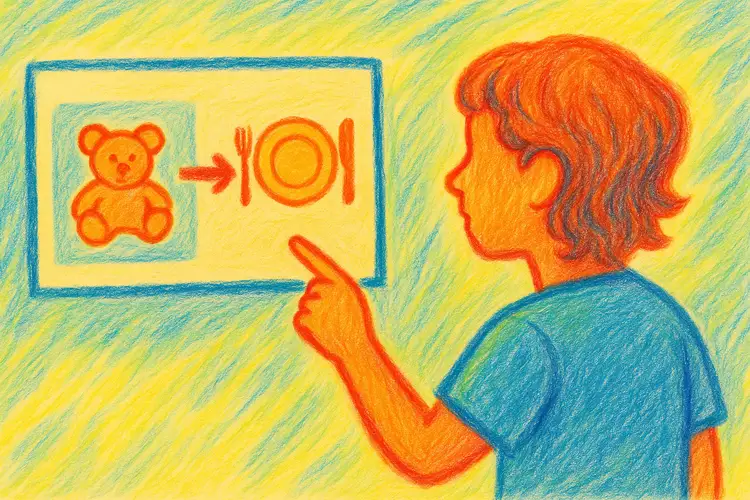Visual Schedules for Transitions: Reducing Stress with Pictograms
Published {$created} by Carsten Blum
Moving from one activity to another is often the hardest part of the day for children.Stopping playtime to start homework, leaving the classroom for lunch, or turning off a screen to get ready for bed — these transitions can trigger frustration or meltdowns.
For children with autism or ADHD, the sudden change can feel overwhelming. Visual schedules help by showing what happens now and what comes next.

How Visual Support Helps with Transitions
Clarity: The child sees both the current activity and the next one.
Predictability: Reduces the “surprise factor” that often causes stress.
Independence: Children can track progress without repeated verbal prompts.
Calmness: Visuals provide a steady reference point during change.
Common Transition Challenges
Some examples where visuals can help:
From playtime to mealtime
From home to school
From one subject to another in class
From outdoor play to indoor activities
From screen time to bedtime
How to Create a Transition Schedule
Identify the tricky transitions for your child or group.
Choose simple icons that clearly represent both activities.
Show them side by side – e.g., “play → dinner” or “math → break.”
Use arrows or order strips to make the flow visible.
Practice together – talk through the change before it happens.
Example Transition Chart
Current | → | Next |
|---|---|---|
🧸 Playtime | → | 🍽️ Dinner |
📚 Reading | → | 🏃 Outdoor play |
🎮 Screen time | → | 🛌 Bedtime |
Tips for Success
Prepare in advance: Show the next step before the current one ends.
Keep it consistent: Use the same symbols each time.
Add timers: Combine visuals with countdowns to make changes predictable.
Stay positive: Praise calm transitions to build confidence.
Benefits Beyond Daily Routines
Learning to handle transitions with visuals builds flexibility and coping skills.Children gain independence, reduce stress, and are better prepared for new or unexpected situations later in life.
Summary
Transitions don’t have to mean conflict.With a visual schedule, children can see what’s next, adjust calmly, and move smoothly through the day.
Next step: Try making a simple transition strip for your child’s most difficult daily change.